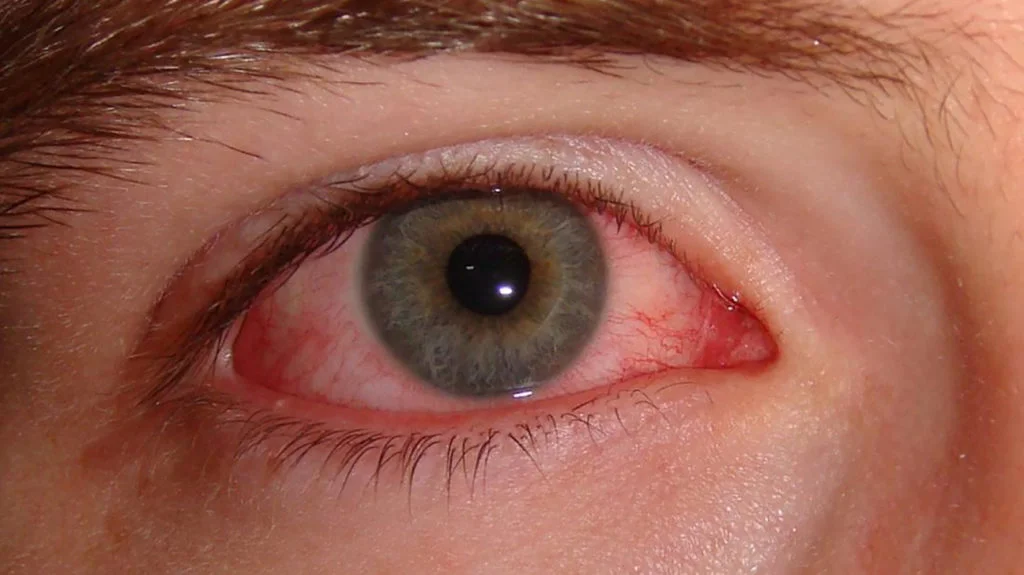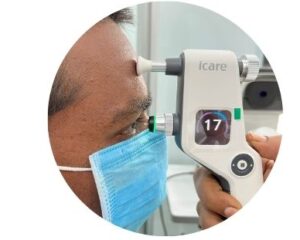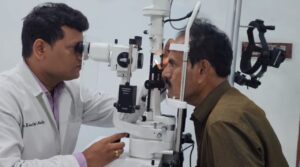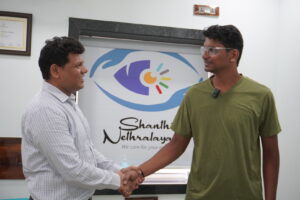
Choosing where to receive glaucoma treatment is a significant decision. At Shanthi Nethralaya Eye Hospital, we offer a patient-centered approach that prioritizes your well-being and visual health. Our team includes some of the best glaucoma doctors in Hyderabad, ensuring expert care for every stage of the condition. If you're searching for a highly experienced glaucoma specialist in Hyderabad, our hospital provides advanced diagnostic and treatment options tailored to each patient’s needs. We are committed to delivering the best glaucoma treatment in Hyderabad, utilizing cutting-edge technology and minimally invasive procedures to manage and control the disease effectively. Recognized for excellence in eye care, our hospital is home to some of the top 10 glaucoma doctors in Hyderabad, offering personalized treatment plans for optimal eye health. Whether you're looking for preventive care or advanced surgical intervention, our specialists provide the best glaucoma treatment to help preserve your vision and improve your quality of life. Visit Shanthi Nethralaya Eye Hospital today to consult with leading glaucoma specialists and take the first step toward maintaining healthy vision.
Early detection of glaucoma is challenging because it often starts without symptoms. For open-angle glaucoma, the symptoms develop slowly











Age

Family History

High Myopia

Medications

Diabetes

High blood pressure

Heart disease

Sickle cell anemia
Choosing where to receive glaucoma treatment is a significant decision. At Shanthi Nethralaya Eye Hospital, we offer a patient-centered approach that prioritizes your well-being and visual health. Here are compelling reasons to consider us for your glaucoma care

Shanthi Nethralaya Eye Hospital is equipped with state-of-the-art diagnostic technologies. From precise tonometry to advanced OCT imaging, we use cutting-edge tools to accurately assess your eye health and tailor treatment plans accordingly.

Every patient undergoes a thorough evaluation at Shanthi Nethralaya. Our comprehensive exams include detailed assessments such as intraocular pressure measurement, dilated eye examinations, and gonioscopy when indicated. This meticulous approach ensures a precise diagnosis and personalized treatment strategy.

We understand that each individual's journey with glaucoma is unique. At Shanthi Nethralaya, we emphasize compassionate care and effective communication. Our team is dedicated to addressing your concerns, educating you about your condition, and involving you in decision-making regarding your treatment.

Our commitment to clinical excellence is reflected in our outcomes. Many of our patients experience significant improvement in their vision and quality of life under our care. We are dedicated to achieving optimal results and maintaining your visual health over the long term.
Navigating glaucoma can be daunting, but with early detection, comprehensive treatment options, and compassionate care, you can manage this condition effectively. Choosing Shanthi Nethralaya Eye Hospital and Dr. B. Shanthi Niketh means partnering with a trusted team dedicated to your eye health. Take the first step towards preserving your vision—schedule your consultation today and let us guide you on your journey to better eye health. For more information or to schedule an appointment, please visit our website or contact our clinic directly. We look forward to supporting you in your glaucoma care journey.

WhatsApp us